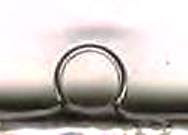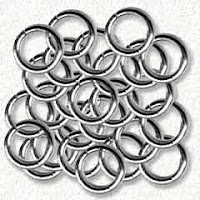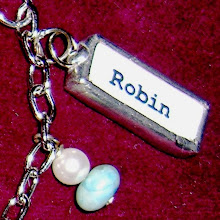Steps for making:
1. ~ Have photo ready cut to desired size
2. ~ Surround image with clear glass on both sides
3. ~ Application of Copper Foil Tape

1. Before you begin it is important that your glass is clean! This means free of dirt and oils from cutter or hands. If you don’t clean the glass this will be the cause of foil not sticking properly.
2. Remove the protective paper backing of the foil as you work. First, center the glass on the foil. Make sure that there is an even amount of overhang on each side of the glass. Wrap the foil around each piece of glass, overlapping it at least 1/4" from where you began. Cut (or tear) off the excess with scissors.
3. Crimp the foil around the edges of the glass. With a blunt piece of wood or a fid, burnish the foil on both sides of the glass and along the outside edge so that the foil adheres to the glass firmly and smoothly. A sloppy wrap job will ruin the appearance and affect the strength of the finished project.
4.~ SOLDERING


1. If you have a wooden clothes pin, they are nice for holding your tiny projects while perfecting the extra coat of solder that some find desirable. Or you can at least use a damp rag to save from burning your fingers.
2. Lay out a damp rag & put your charm piece on top FLAT. Brush your flux around that top side where there is copper foil. THIS STEP IS SIMPLY TO COAT YOUR PIECE LIGHTLY WITH SOLDER (also called tinning)
3. Hold the solder with an extended length pulled out with one hand & the Iron in the other hand (like in the picture)
4. Press solder on top of HOT TIP, it will then melt down the tip and on to the copper foil.
5. As you rub hot tip all around the top side the solder will spread. You can also get the sides while you’re at it. Then turn piece over & do the same thing.
6. Now use wet rag (or wood clothes pin) to hold jewelry piece upright for extra solder if you feel you need to build some up. You won’t need to hold the roll of solder at this stage. Just take your iron tip & placing it under the solder wire hanging out pick up little bits of solder at a time. Tap on the top of jewelry piece to release & build away.
MORE Soldering Steps (to help you advance further):
Step 1. Apply flux to the Foil. Applying the appropriate flux is an integral part of the soldering process. Important: Remember to replace flux when it becomes cloudy or dirty. It is a wise idea to pour only a small amount of fresh flux into a container or bottle cap before each soldering session so that you don't contaminate the entire bottle.
Step 2. Melt just a little solder onto your piece and drag soldering tip along edges to cover all copper foil.
Step 3. If you apply flux to the copper & leave it unsoldered for too long, it will result in badly tarnished, oxidized foil that will be difficult, or impossible to solder without a thorough cleaning. Should this happens, you can remove the oxidation with a soupy mixture of water, vinegar & table salt.
Step 4. The final soldering step is called "beading." This process involves building up the solder to a uniformly rounded bead along your piece. Move the iron (with the tip held horizontal to the piece) & the solder continuously along the length of your piece. Remember that you can't bead a seam if you don't use enough solder. Likewise, too much solder will be difficult to uniformly bead. You will learn the proper amount to use through practice and experience. Bead both sides of your project.
Step 5. You will want the outside edges to have a more finished appearance. You now want to bead the perimeter. First apply a very light coat of solder to the perimeter on both sides of the piece. This is called "tinning."
Step 6. Now bead the edges. This is accomplished by holding the edges to be soldered perfectly horizontal to the table. Melt just enough solder on the edge so that it "rolls" down over the sides of the foil, uniformly rounding the edge. This adds strength & a more professional look to your work. Please note that on curved edges you can only bead about 1/2" at a time; then carefully allow the solder to set, and slowly turn the piece so that every 1/2" section you are working on is horizontal to your work surface.
5. ~ ATTACHING RING


Solder on rings for hanging at this time. Pre-formed circles of brass or copper can be purchased from your supplier or you can make you own simply by curling 18 or 20 gauge silver tinned or copper wire around a dowel then snip down the side of the coiled wire to make many rings (pictured below)


Step 1. Lay out a damp rag & put your charm piece on top FLAT.
Step 2. Attach jump ring by fluxing spot where you’ll attach. Also flux the open side of the ring to close up with solder in the attaching process.
Step 3. Hold the jump ring on that spot with self locking tweezers.
Step 4. One hand holds the iron & picks up a small bead of solder, the other hand holds that ring in place.
Step 5. By quickly tapping on the spot where you want that bead of solder to go it will release it where you have fluxed.
Step 6. THIS should quickly & easily attach any ring to any piece (nuggets too).
Step 7. Slip pendant onto a chain, cord or ribbon
6. ~ SOLDERING IRON TIP CARE:
These steps are ESPECIALLY IMPORTANT when you use LEAD FREE solder. Lead free is extra tough on tips, as these solders are all METAL vs. a much softer lead based solder. This causes the tip coating to break down and become damaged quickly if you do not take proper care of your tip.
1. Re-tin tip regularly. Using a Sal Ammoniac Block. Melt some of your solder on top & press hot iron tip into that. This puts a fresh coat of tin on your tip.
2. Wipe with wet rag. Don’t use a more corrosive scrubber, as it will only break down the tip faster.
3. NO dipping of tip into FLUX because it is corrosive.
4. Remove your tip occasionally so it doesn’t become stuck. Because inside the barrel corrosives can build up and will eventually freeze your tip in there.
5. Most iron tips today are a copper core surrounded by iron, hence the term 'iron clad' that is then nickel or chrome plated Because solder won't stick to nickel or chrome the plating on the chisel end of the tip is removed to expose the iron cladding। Solder does stick to iron। To keep the tip from rusting you must keep it coated with a layer of tin, hence the term tinning & why solders used in glass soldering are a mixture of tin & other metals. It will ensure that you are receiving the maximum heat at the tip surface.
6. Impurities in the solder can build up on your tip, effecting heat transfer & make it difficult to सोल्दे
7. Properly cleaned tips are bright and shiny. Keeping the tip clean is important but excessive wiping causes the tip temperature to drastically rise & fall so the different metal layers in the tip to repeatedly expand & contract. This cycling leads to metal fatigue & ultimately tip collapse. The more frequently you wipe the tip, the more you stress it, so do not over-do.
8. Never use sandpaper or any abrasive material to clean a tip.
9. At the end of a soldering session, wipe the tip clean, flood the tip with solder, wipe it again & then unplug the iron। This will flush & re-tin your tip, protecting it from oxidation or corrosion
10. Prevent the tip from seizing (becoming stuck) in the barrel by loosening the nut or screw that secures it. This is an especially good practice when storing your iron. If your tip seizes, you can easily damage the heating element trying to remove it. When reinserting tips, make sure they are properly seated in the barrell
7. ~ SOLDERING PROBLEMS & SOLUTIONS
~*~ A rheostat (temperature controller) is helpful for maintaining heat control
Washing – To prevent corrosive acids (white film) from appearing on solder with the passing of time, always wash your piece immediately after completion. Use a Flux Cleaner like KwikClean or CJ’s. At the very least spray with Alcohol, then wipe thoroughly. To get rid of any black marks or dull spots in the solder use EXTRA Fine Steel Wool (0000 Steel Wool) on your solder & clean again
PROBLEM / PROBABLE CAUSE / SOLUTION
1. Beading of seams is too flat = Not enough solder
2. Beading is lumpy peaks instead of flowing = Iron is too cold
3. Can't seam to get beading smooth = Did you flux? Iron too cold or too hot. Too much or not enough solder
4. Solder won't stick to copper foil = Did you flux? Copper foil may be oxidized. Clean with vinegar, salt & water
5. Solder splatters into little balls all over the glass = Iron too hot, TURN the heat down
FOIL LIFTING ~ TOP 3 REASONS ARE:
2. Not burnishing enough OR believe it or not burnishing TOO MUCH. Going over & over AND OVER pressing that foil, can destroy the adhesive backing.
3. Soldering TOO much. Going over AND OVER foil with the Soldering Iron Tip trying to get that PERFECT solder (LOL yes I am one of those who tries desperately to make it perfect & foil lifting will occur).







